
Posts Tagged: Anthophora urbana
The Sneaky Cuckoo Bee
You could call it a slacker, a deadbeat, a moocher, a sponger, or a loafer. Or you could call it a...
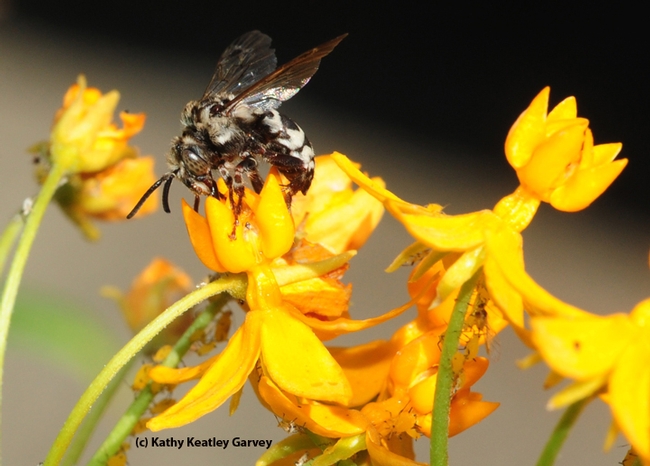
A cuckoo bee, Xeromelecta californica, sips nectar from a tropical milkweed, Asclepias curassavica, in Vacaville, Calif. (Photo by Kathy Keatley Garvey)
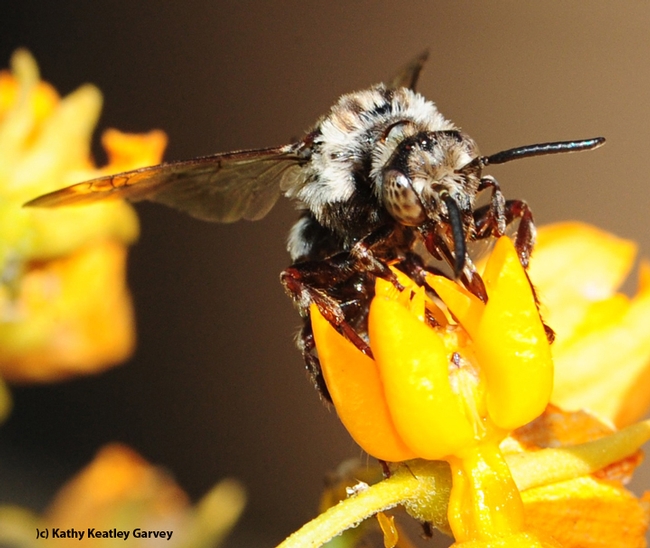
Close-up of a cuckoo bee, Xeromelecta californica, on a tropical milkweed, Asclepias curassavica. (Photo by Kathy Keatley Garvey)
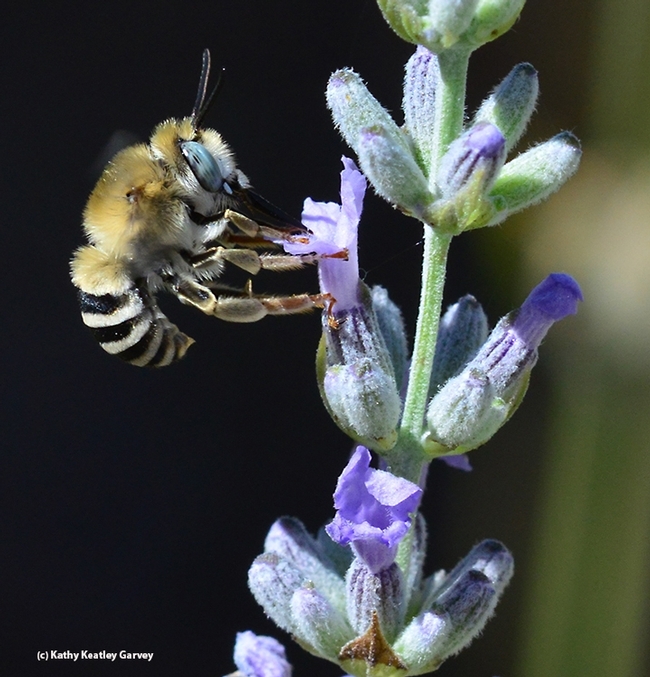
A digger bee, Anthophora urbana, sips nectar from lavender. The cuckoo bee, Xeromelecta californica, is a parasite of Anthophora. It lays eggs in the host's nest, resulting in death of the host's offspring. (Photo by Kathy Keatley Garvey)
Nice to See You!
Nice to see you! In early spring and throughout most of the summer, we saw scores of digger bees,...

A male digger bee, Anthophora urbana, (as identified by Robbin Thorp of UC Davis) heads for a lavender blossom. (Photo by Kathy Keatley Garvey)
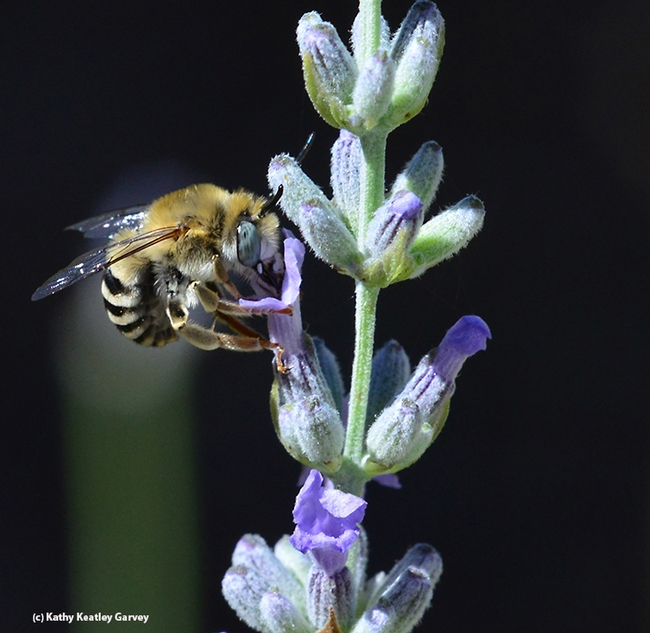
Male digger bee, Anthophora urbana, nectaring on lavender. (Photo by Kathy Keatley Garvey)
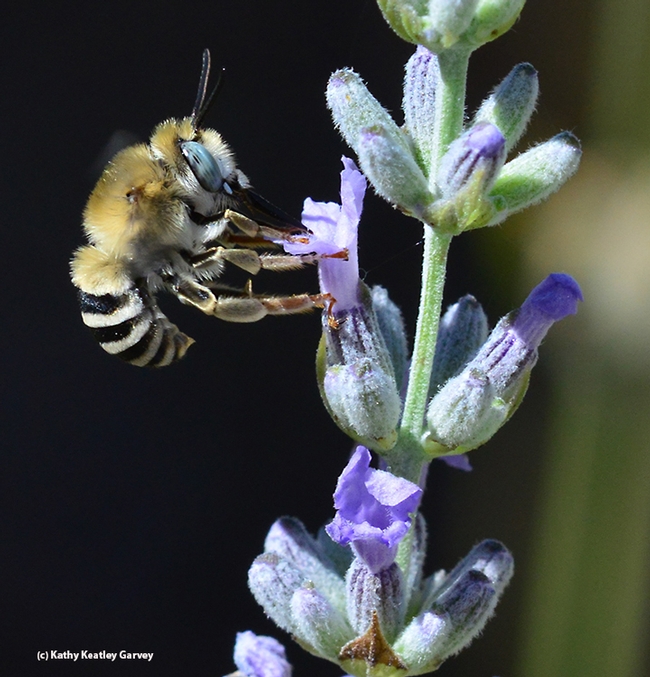
Male digger bee, Anthophora urbana, finishes foraging on lavender. (Photo by Kathy Keatley Garvey)
Diggin' the Digger Bee
Diggin' the digger bee... We spotted this female digger bee, Anthophora urbana, zooming in on some...
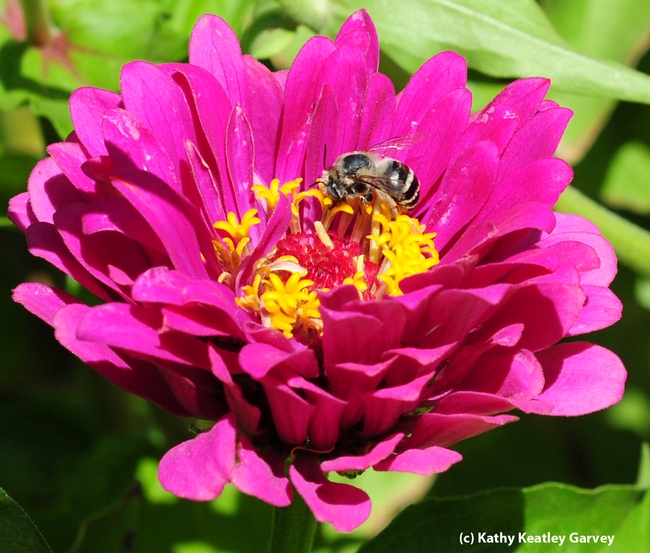
Female digger bee, Anthophora urbana, on zinnia. (Photo by Kathy Keatley Garvey),
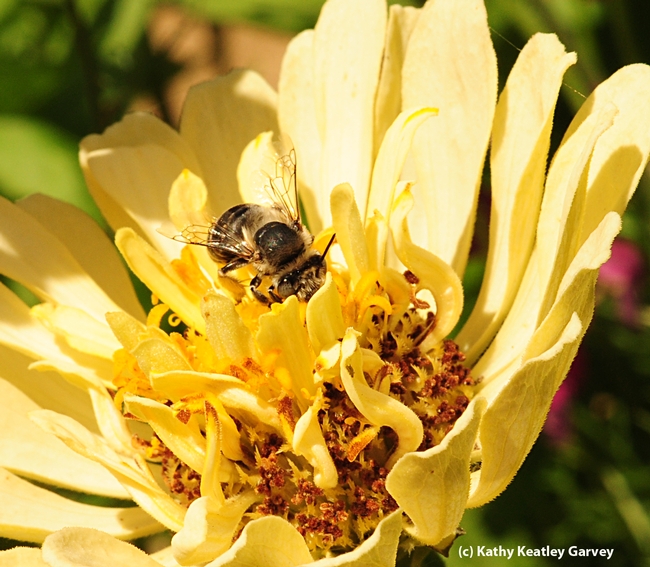
Female digger bee, Anthophora urbana, peers over the petals of a zinnia. (Photo by Kathy Keatley Garvey)

Caught in flight, a female digger bee, Anthophora urbana, heads for a zinnia. (Photo by Kathy Keatley Garvey)
Tiny Bee
It's smaller than a honey bee.And faster and louder.Anthophora urbana, a solitary, ground-nesting...
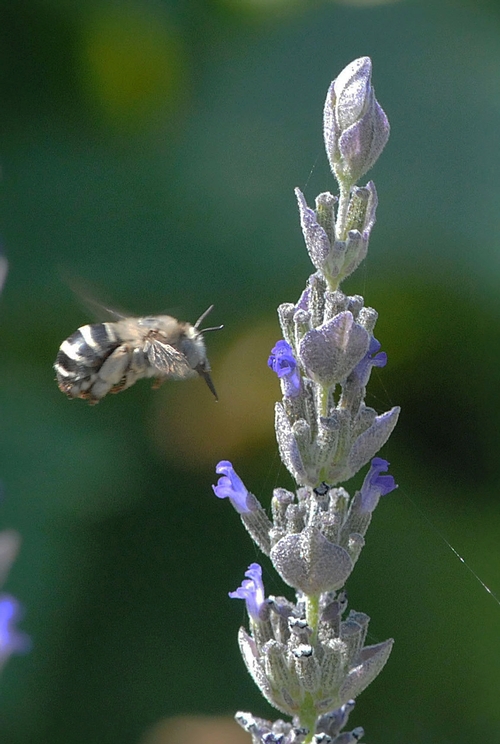
Anthophora urbana

Nectaring Lavender
